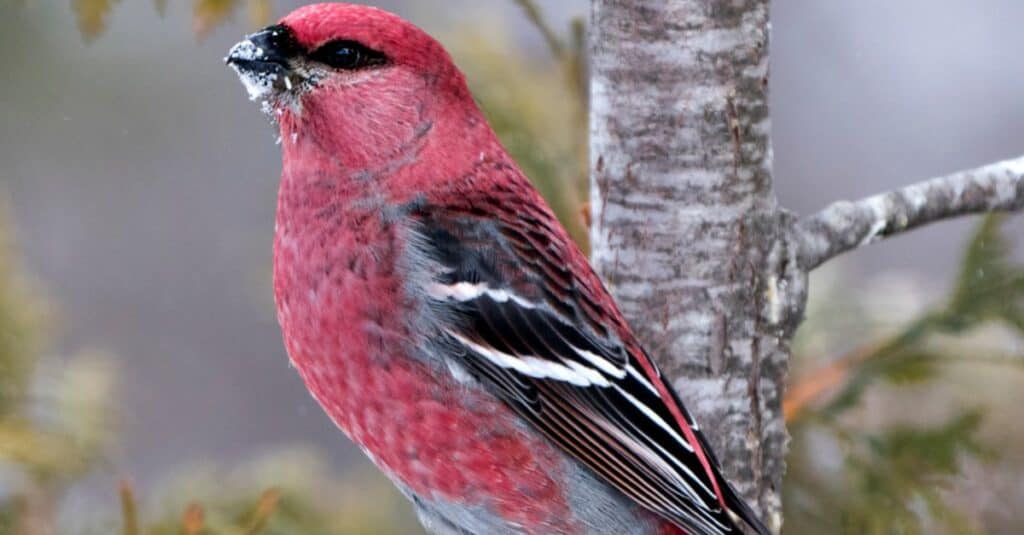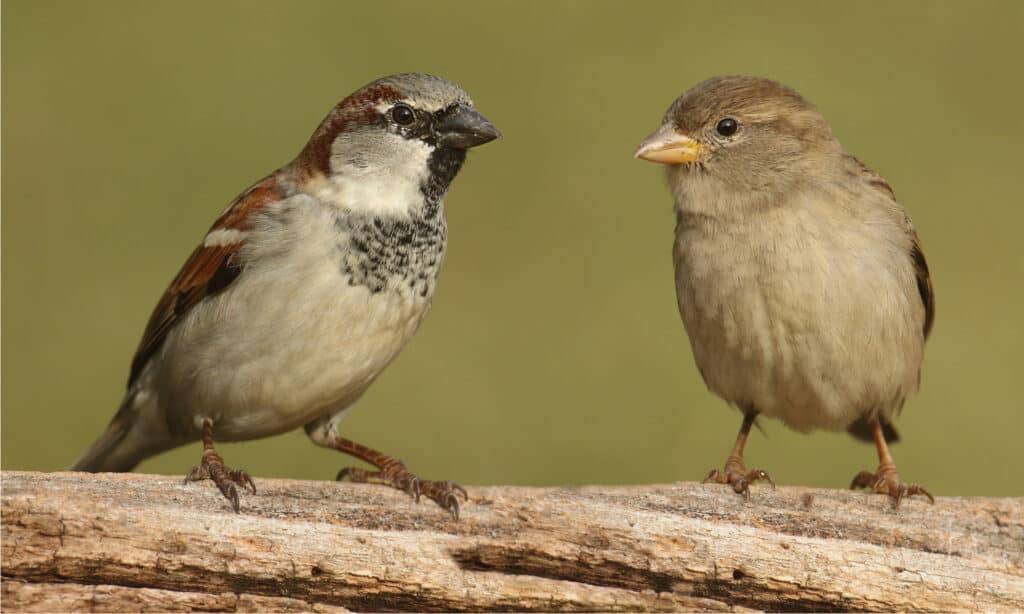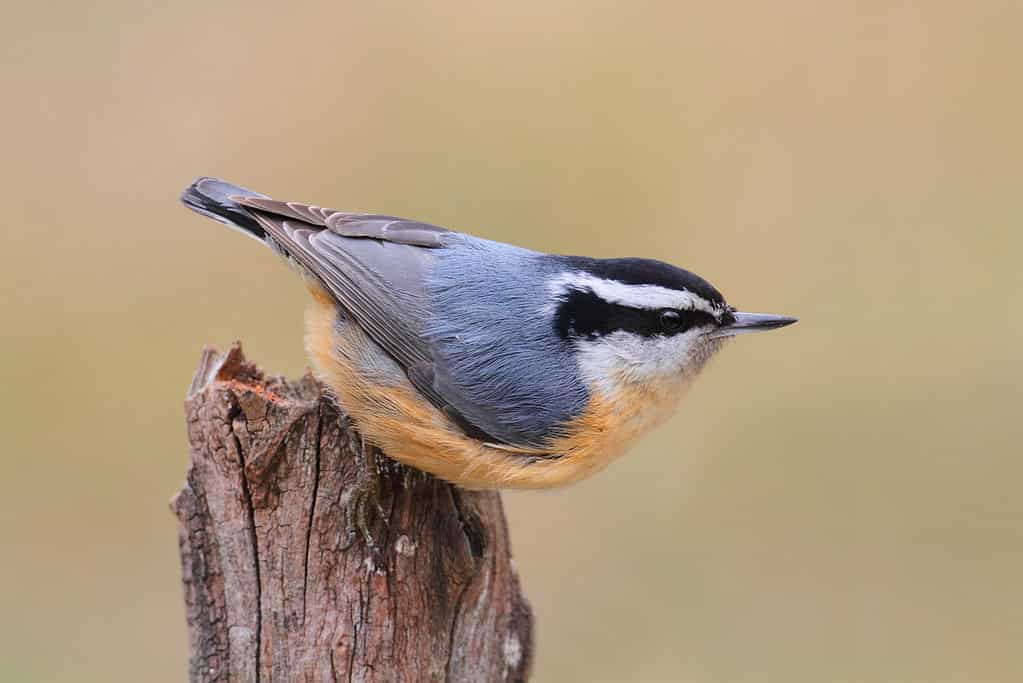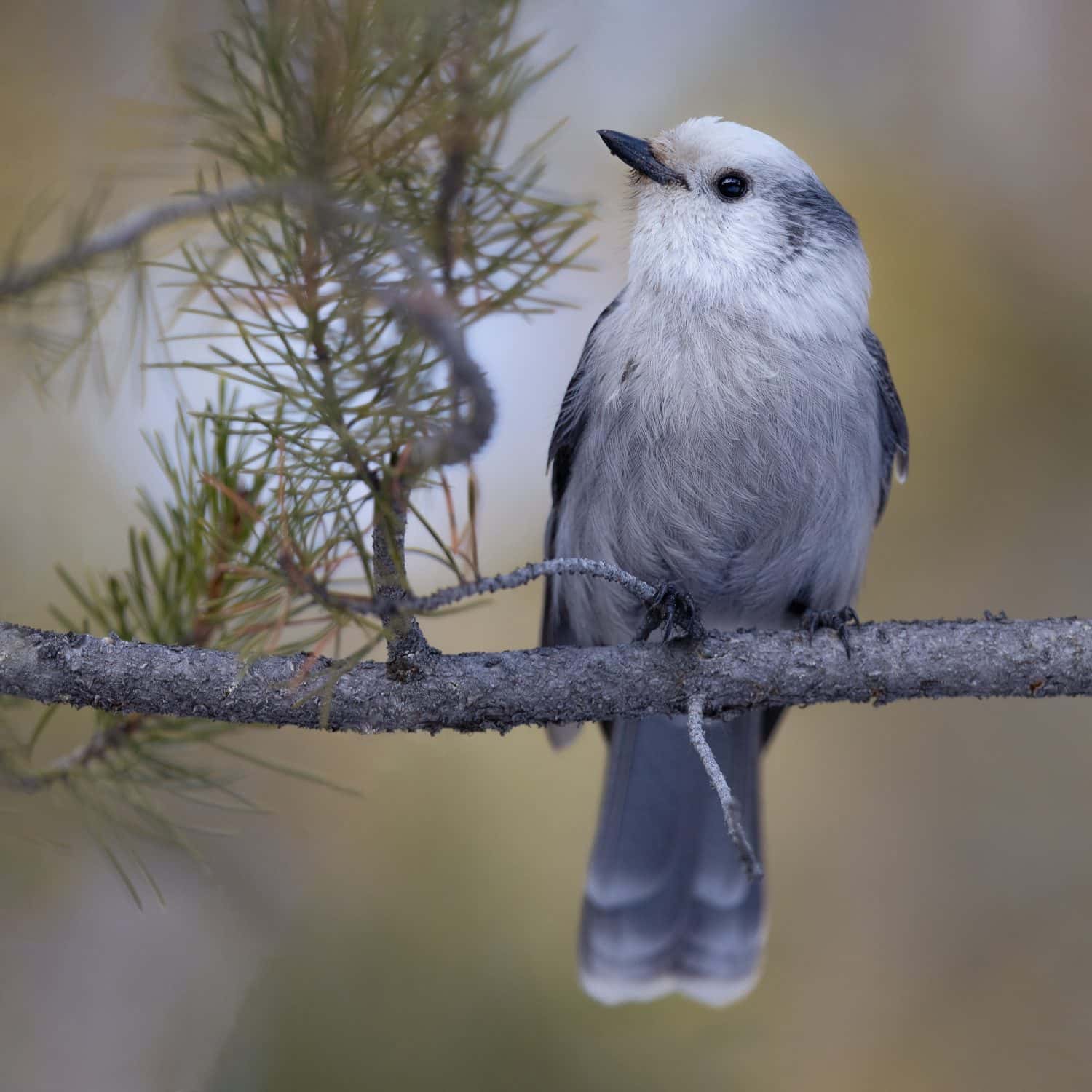Do you enjoy birding in Wyoming? It’s a great pastime that many residents in Wyoming enjoy, especially during the winter season. Many birds will migrate to find more resources, like nesting areas or more abundant food sources. Some species will migrate for breeding purposes, too. Below is a list of birds that winter in Wyoming. Grab a hot cup of cocoa, binoculars, and your best camera before heading out!
1. Black-capped Chickadee

Black-capped chickadees are friendly and might land on your hand for a snack.
©Rino Falvo/Shutterstock.com
The black-capped chickadee is one of the most common, year-round resident songbirds you will see in Wyoming. They’re famous for their black, white, and gray coloration. These bold little birds have big personalities and won’t be afraid to hang out on your feeder all winter. This species loves lower-elevation forests and is often found foraging while hanging upside down! They form monogamous bonds and can lay up to eight creamy-colored eggs that usually have specks of brown or red. Look for them in local parks, your backyard, or the forests.
2. House Finch

This male house finch is trying to grab a seed from a female at a feeder.
©Real Window Creative/Shutterstock.com
If you like to enjoy a cup of coffee and birdwatch in your backyard, you’ll probably see plenty of house finches. These small songbirds are fond of vegetarian options and enjoy foraging on the ground or hanging out on your feeder. Unfortunately, they can be aggressive while visiting the feeder and lash out at other birds. The adult males have beautiful reddish hues on their face and upper breast. They’re monogamous and can lay up to six clutches of eggs. They hang out in noisy groups on the edges of forests, parks, and farms.
3. Common Ravens

Ravens pair together to make the hunting process more efficient.
©iStock.com/wrangel
You’re likely to come across common ravens across many different states. In Wyoming, they are usually found in the state’s western half. They’re omnivores that build big, bulky nests high in tall trees. You can always tell the difference between a raven and a crow by the noises they make. A crow has a distinctive “caw,” while the raven has more of a coarse, “croak-like” call. They usually travel alone or in pairs but tend to roost in groups during winter. Also, ravens have an extensive repertoire of vocalizations. Did you know that they can communicate with each other as well as mimic other birds?
4. Pine Grosbeaks

The pine grosbeak is a part of the finch family.
©iStock.com/Rejean Bedard
Pine grosbeaks are often found visiting feeders across Wyoming in winter. Some say their favorite seed is sunflower! These plump grosbeaks are known for being laid-back and a bit sluggish. The males are mostly red in color, which is beautiful against the bright, white snow. They’re monogamous birds and prove it with their identical flight calls! Females rarely sing, but the males have a high-pitched warble. To find them, check on deciduous trees and pines, or take a walk in Yellowstone National Park!
5. House Sparrows

A house sparrow can swim when needed and has been seen swimming underwater when threatened.
©Steve Byland/Shutterstock.com
You might be wondering which bird you will commonly see all year long, and that would likely be the house sparrow. While they can be seen across the United States, you are likelier to see them in Wyoming. These monogamous birds stay close to each other, with the male being distinguished by their black chin and upper chest. They’re incredibly friendly, and many birders look forward to seeing them on their feeders over the winter season. You can also find them on the ground as they’re commonly found foraging in the grass. These birds are very sociable and can be found huddled together for warmth.
6. Great Horned Owls

Great horned owls also have the nickname “tiger owl” or “hoot owl.”
©iStock.com/Bobliving
The great horned owl is a permanent resident that is very active in early winter. These owls feed on small prey such as rabbits, squirrels, and other owls. They’re incredibly adaptable when it comes to their environment. Great horned owls will make a home in almost any tree or rocky area. They’re nocturnal and have a deep tone to their hoots. Most researchers agree that not only are these owls monogamous, but they could potentially mate for life. Be careful if you come near one of these aggressive owls, though. They’ve been given the nickname “tiger owl” for a reason!
7. Red-breasted Nuthatch

Red-breasted nuthatches are confident little birds that won’t be scared off by the other birds at your feeder.
©iStock.com/SteveByland
The next bird on the list, the red-breasted nuthatch, actually prefers the cold! These active songbirds are known for how compact they are, appearing to have almost no neck at all. Both sexes appear the same with vibrant cinnamon-colored bellies and blue-gray backs. You might also see them performing acrobatic routines to reach food other birds miss. They do this by climbing down tree trunks headfirst! Females can lay up to eight eggs, which are dotted in red and brown.
8. Red Crossbill

These birds feature crossed bills perfect for prying open the cones from evergreens.
©Henk Bogaard/Shutterstock.com
These year-round residents are known to be nomadic. They will go where the food is but rarely leave the state. Thanks to their bright, rusty orange feathers and distinctive crossed bills, you can always find these birds. Look for them in forests and groves in big groups as they forage in flocks. This species is fond of spruce and pine cones. These stubby birds don’t have a normal, well-defined breeding season. Usually, females will lay beautiful greenish-white or bluish-white eggs with up to five per clutch.
9. Clark’s Nutcrackers

Clark’s nutcrackers will eat other birds, including nestlings.
©Dennis W Donohue/Shutterstock.com
Did you know these birds are crucial to the Greater Yellowstone ecosystem? The reason is that they hide pine seeds by burying them in hidden caches during the fall season, which they return to in winter. The seeds they don’t eat then grow into trees! Though Clark’s nutcrackers are omnivores, they mostly prefer pine seeds. These bold birds have a pouch under their tongues that they use to hold over 100 seeds at a time, so you can expect to see them hoarding plenty of seeds at your feeder.
10. Gray Jays

Campers at Yellowstone have noted that these bold birds will beg for food!
©Wirestock Creators/Shutterstock.com
We have another bird that likes to store their food. The gray jays have incredibly sticky saliva that they use like glue! They stick their seeds to tree branches that will sit higher above the oncoming snowline. They’re a little smaller than a blue jay, with long tails and light gray bellies. Their eggs have olive-colored spots and hatch after about 17 days. These jays are fearless birds that might land on your hand to feed if offered!
The photo featured at the top of this post is © rck_953/Shutterstock.com
Thank you for reading! Have some feedback for us? Contact the AZ Animals editorial team.






